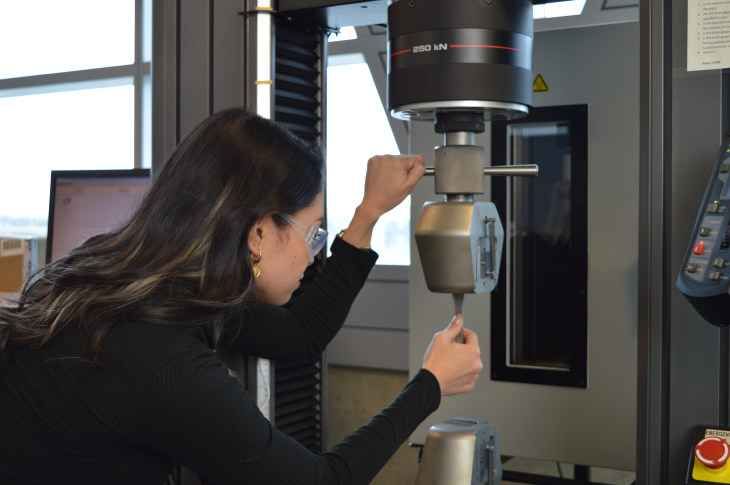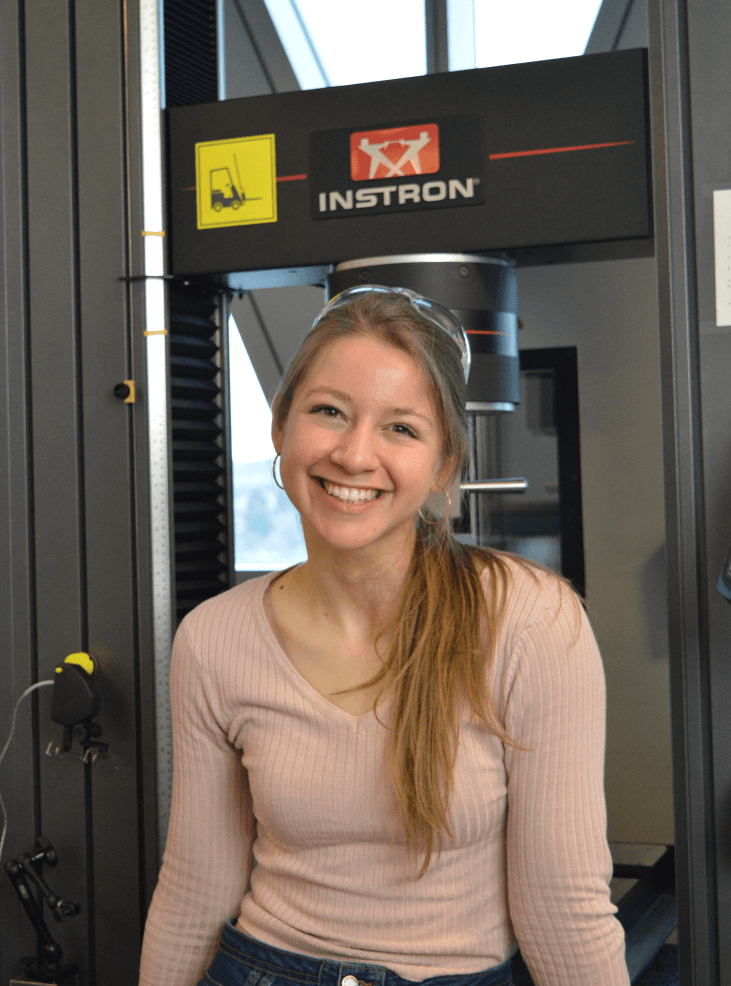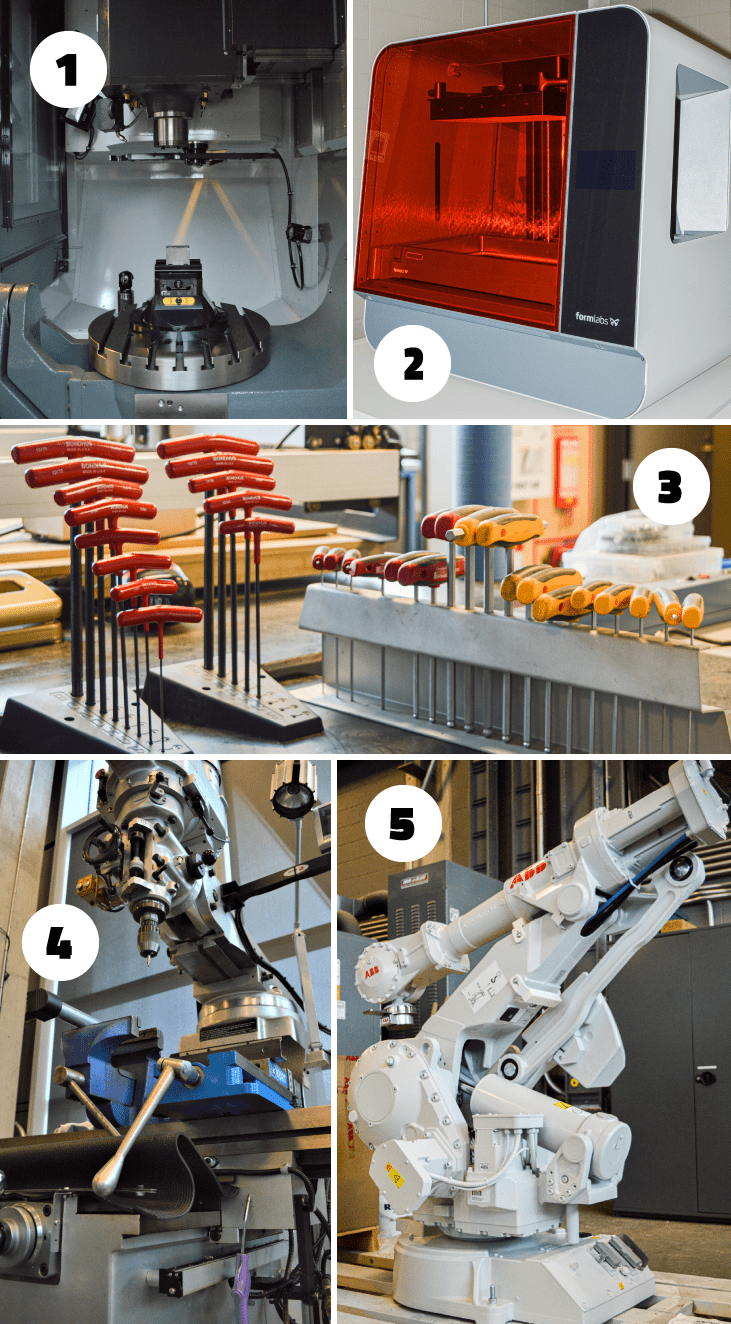Women empowering women: Grassroot initiatives explore opportunity, support at SAIT

On Tuesday, March 8, SAIT and Women in Trades and Technology (WITT) will host the fourth annual International Women’s Day Conference and Celebration — a unique opportunity to hear from bestselling author Elizabeth Lesser on the importance of women as storytellers.
Here at SAIT, a group of determined women are working to help shape a new story — one that begins with an idea and institutional backing, and ends with more support and opportunity for women.
Introducing more women to manufacturing
Francesca Flaskay works in the Centre for Innovation and Research in Advanced Manufacturing and Materials (CIRAMM), one of the research areas within SAIT’s Applied Research and Innovation Services (ARIS) department. As a principal investigator, designer and lead of CIRAMM’s Creative Design and Composites Laboratory, she supports design and manufacturing projects across a number of industries.
But her team’s latest project is one she can’t wait to get off the ground thanks to new funding from SAIT’s ’88 Legacy Fund: involving more women in advanced manufacturing.
Women Empowerment in Advanced Manufacturing (WEAM) is an initiative aimed at addressing the gender disparity in the industry.
“WEAM will educate and empower women through CIRAMM’s facilities, ultimately giving them the skills and confidence to form valuable connections for their future,” says Flaskay.
Turning ideas into reality with the ’88 Legacy Fund
As a result of SAIT’s support and contribution of the Owasina Hall residence to house athletes and coaches for the duration of the 1988 Winter Olympic Games, SAIT received a legacy endowment of $1 million. Each year, the SAIT Board of Governors is pleased to make the annual income from this fund available to support projects that will benefit SAIT.
In December 2021, eight projects — including WEAM, and Women Teaching Classrooms of Mostly Men and Academic Managers' Support — were awarded a total of $185,915.

For Flaskay, attracting women to advanced manufacturing starts with addressing misconceptions about the industry itself.
“When people think about a career in manufacturing, they could think of working in an iron foundry, which could seem inaccessible,” says Flaskay. “At CIRAMM, we directly work with industry clients, spanning multiple industries such as agriculture, automotive and aerospace, to name a few. The manufacturing industry is advancing quickly — it’s a very exciting place to be.”
Just a few years back, even Flaskay didn’t picture herself in the manufacturing industry — she was a Painting student at the Alberta University of the Arts who was also learning about creative object design and fabrication. But an opportunity to step foot inside a SAIT lab to do some 3D design work for ARIS solidified her interest in technical design and revealed the potential of a career in manufacturing.
By opening up the doors of CIRAMM’s facilities to youth and women, she hopes to do the same for others.
This summer, WEAM plans to host two week-long open-house style events — one for girls aged 14 to 17 and one for current SAIT female students in any field of study — where participants can check out the labs, learn a few skills and explore career paths.
A “WoManufacturing” event is also in the works which would expose attendees to CIRAMM’s advanced capabilities. There will be some equipment from the labs that the attendees can try out, such as a 3D scanner and 3D printers.

Equipment found in the CIRAMM labs:
1. Computer numerical control (CNC) mill: Employs computerized controls and rotating multi-point cutting tools to remove material from a work piece and produce a custom-designed final product or part.
2. Formlabs Form 3BL printer: Used in prototyping parts by employing complex geometries. Performs all form-2 resin and biomedical resin printing as well.
3. T-bar tools: Used in creating composites in the Creative Design and Composites lab.
4. Conventional mill: Used to mill flat but also irregular surfaces. Used in advanced manufacturing to drill bores, cut gears and produce slots.
5. ABB robotic arm: Used to complete a large number of repetitive manufacturing processes with extreme precision.
The ultimate goal of the WEAM initiative is to offer two female SAIT students paid internships, providing a hands-on work-integrated learning experience.
“We want to give students the opportunity to come in and get paid for their work,” says Flaskay. “Over the course of four to six months, our interns will develop technical and leadership skills while acquiring new methods of working with clients, providing a stepping stone to enter the industry successfully and confidently.”
Exploring the female experience of teaching mostly-male classrooms
In 2016, SAIT Instructor Heather Setka began conducting research on a topic she had experienced firsthand: women teaching classrooms made up of mostly men.
Having taught both gender-balanced and mostly-male communication and liberal arts studies classes across a number of SAIT programs, Setka began reflecting on her own lived experience, interviewing colleagues and conducting literature reviews to better understand the experiences of women leading mostly men in a classroom setting.
Fast forward to today, Setka’s research has expanded to include analysis of the levels of academic manager support provided to these women. Her work is gaining traction in a world that increasingly values the dismantling of gender-based biases and barriers.
Thanks to a first round of funding from the ’88 Legacy Funding last year, Setka was able to hire two research assistants to further this work — both of whom are female SAIT alumni gaining post-graduate level research experience. New ’88 Legacy funding will extend their contracts and allow for a third research assistant, while an additional research scholarship through ACIFA will bring on a fourth.
While we can’t reveal any of Setka’s early findings just yet, we can share the goal of this work: to make the best possible learning experience for everyone involved.
“The hope is to empower women instructors, but that empowerment has an important byproduct,” says Setka. “That byproduct is creating the best possible experience for students in the classroom.”
She notes that male students taught by females have the potential to learn not only the class material, but also how to work with a woman as a leader in their field — a valuable career skill.
Women employee resource group in the works
A group of female employees and leaders at SAIT are working to create an employee resource group (ERG) for women at the institution. The ERG will be a space to amplify the voices and accomplishments of women, empower one another and create opportunities to forge meaningful connections.
Building a more inclusive campus
#BreakTheBias on Tuesday, March 8. Register for the International Women’s Day Conference and Celebration by 10 am on Wednesday, March 2.
Learn more about Community and Belonging at SAIT.
Commitment to Excellence
We prepare students for successful careers and lives.
SAIT'S
2020-2025
Strategic plan

Oki, Âba wathtech, Danit'ada, Tawnshi, Hello.
SAIT is located on the traditional territories of the Niitsitapi (Blackfoot) and the people of Treaty 7 which includes the Siksika, the Piikani, the Kainai, the Tsuut’ina and the Îyârhe Nakoda of Bearspaw, Chiniki and Goodstoney.
We are situated in an area the Blackfoot tribes traditionally called Moh’kinsstis, where the Bow River meets the Elbow River. We now call it the city of Calgary, which is also home to the Métis Nation of Alberta.